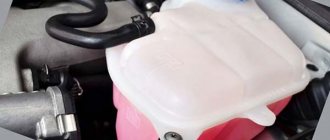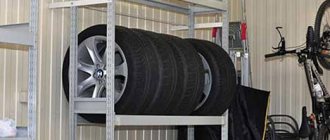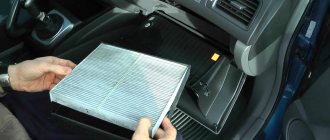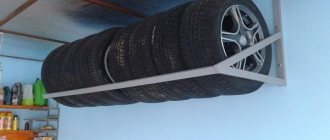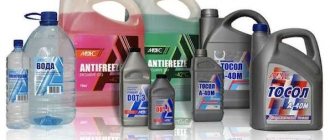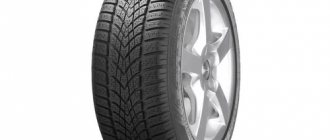Many car enthusiasts are wondering whether summer, winter and all-season tires have a service life and what is the average shelf life in years for a new wheeled truck tire according to GOST. Special quality criteria are imposed on vehicles intended for transporting heavy loads, because during transportation they can create an emergency situation on the roads if the products fail: they turn out to be defective, poorly installed or with severe wear. In this article we will tell you how to determine these indicators and make a replacement in time.
Operating conditions for car tires
The climate in our country greatly influences the use of tires. Heavy-duty vehicles typically cover long distances in one trip. And monitoring the condition of the tires at every stop is an essential requirement, since without this you can get into a difficult emergency situation on the roads. What difficulties do drivers face:
- Poor quality of roads. This is a problem in most regions; many routes, in particular those remote from large cities, leave much to be desired.
- Weather. We are not only talking about frost, which turns low-quality rubber into hard and non-plastic, but also about rain. Slush makes the surface slippery and dangerous, especially if cold weather sets in immediately after precipitation. There is a complete or partial loss of adhesion to the road surface, so-called hydroplaning. One of the main factors causing this effect is worn tires. Your safety primarily depends on this, so carefully monitor the condition of the tread. Also remember: when buying products from foreign brands, you should take into account the operating conditions in Russian weather conditions. This will make the service life of the tires (tyres) significantly longer, and will also minimize the possibility of an accident.
- High load, because heavy trucks transport very heavy and large items.
Products will last longer if the car enthusiast regularly checks, balances and repairs them in a timely manner, and also stores them in a suitable place.
At the discretion of the consumer
The service life of concrete is around 100 years. The shelf life of raw smoked sausage outside the refrigerator is 3-4 years, provided that it is lubricated with vegetable oil.
The shelf life of car tires is somewhere in between these two products. Tractors successfully run on tires produced during the Soviet era. Retro cars in the Mille Miglia, Mercedes and Porsche museums are on tires from the 40s to the 80s and periodically participate in endurance races - driven from the north of Italy from Brescia to the central city of Rome and back.
Tires are getting old! But they age very slowly. Everything in this world ages and only cognacs and wines become better and more expensive over the years. But tires age very slowly, aging at about the same rate as people. Five-year-old tires, especially summer ones, should never be thrown away, just like five-year-old people :)
Truck tire markings
All information about them is indicated on the outer side. The sidewall does not wear off; unlike the tread, it is more difficult to cut, so the letters and numbers remain until the end of use. Brand designations, the manufacturer's logo and the brand name are written in larger sizes. No less important are:
- Arrows indicating the direction of movement. Since the tread pattern is supposed to provide a more stable position on the road, if the tires are not worn correctly, the car may have poor grip on the lane.
- Standard size. It is this digital and letter meaning that is meant by marking. Russian manufacturers most often follow European traditions in designation.
Let's give an example on a specific brand: 215*60*R16, where:
- 215 — tread width in millimeters;
- 60 — profile height;
- 16 — diameter of the landing rim;
- R - radial type of cord construction (interlacing of cord threads), the second option is diagonal (D).
If the wheel is tube-type, then it will have the TT designation and additional symbols:
- LGA - in a passenger car;
- GA - on a truck;
- LA - in cars or minibuses.
If there is no camera, you will see the words Tubeless.
Why is this information needed? Having the technical characteristics of a particular product, you can independently calculate the service life of tires if there is no accompanying documentation.
What else can you find out from the truck tire markings:
- width of the rim tape;
- rim diameter;
- tread height and ply (from 8 to 18 layers of rubber);
- speed index - the table below shows the correspondence of the letter of the Latin alphabet with the maximum speed value.
| J | 100 km/h |
| K | 110 km/h |
| I | 120 km/h |
| M | 130 km/h |
| N | 140 km/h |
| P | 150 km/h |
| Q | 160 km/h |
| R | 170 km/h |
Next to the letter there is a number indicating the load index. It can be from 116 to 190, which means from 1250 to 10600 kg per wheel, respectively. If the abbreviation EL or the inscription Reinforced is next to it, the total load capacity can be increased by another three points, because the radial structure is reinforced with additional cord layers and metal threads.
There is a second way of marking - American. Here, the letter T or the combination LT is placed in front of the digital designations, which will indicate its intended use for a truck (as opposed to P for cars). Or you may be faced with inch calculation, then the view will be like this: 30*10*R16.
Our production
How often should you change summer tires: opinions of car owners
- The wheels look good, which means there is no need to change them . My Zhiguli has been driving for 9 years and covered 70 thousand km. The rear wheels are original, but I replaced the front wheels because one tire was damaged during an accident. Moreover, I had to install both new wheels, because when replacing one the car was drifting to the side. If it weren’t for this accident, I would not have changed anything at all and would have driven on the old wheels. After all, the car already obeys the steering wheel normally.
- Everything depends on quality .
I came across information that the Japanese change wheels after two or three years. However, they do not pay attention to wear and tear. Then this waste is brought to us, and our drivers use it for several more years. But Japanese quality is not China; such a trick will not work with the latter. - An additional plus .
Normal motorists prefer not to save on oil and tires. I drove my Michelin Pilot Exalto for 2 years and sold it. The tread was normal, the marks had not yet appeared. I think that you shouldn’t roll the wheels to zero, it’s better to sell it on time in good condition. I took a brand new Pirelli P7 for myself, and got almost half the price for the old ones. All you have to do is throw away completely bald tires, and you can still drive on normal ones, and have additional benefits. - The replacement issue needs to be decided based on mileage..
Today, many manufacturers produce excellent quality tires. Of course, there are some that won’t last long, cheap ones. But on average you can drive 25–30 thousand km on tires. That is, if you already have such mileage, you should think about replacing tires. - Everyone has their own criteria for when to replace tires .
What's the point of installing new tires when the manufacturer's warranty has not expired? In addition, you can also focus on the wear indicator. A lot is said about the service life of tires, but no one knows exactly how long you can drive on specific wheels - 3 years, or 5, or 10. Therefore, you should still trust the manufacturers, they know better what kind of service life the rubber has. Of course, if desired and possible, you can change the wheels at least every six months. So someone buys a new car instead of washing the old one.
Rules for storing tires to extend their shelf life
Let's give some recommendations:
- Air humidity should be normal (up to 50-60 percent), and not high. This can be ensured by the presence of heaters or a heating system, as well as regular ventilation and good natural ventilation.
- It is necessary to maintain a positive temperature not exceeding 25 degrees Celsius.
- If tires are stored assembled together with the wheels (this often happens when switching from winter to summer), then their location should be horizontal. Another alternative is hanging.
- Store the removed tire vertically.
What external influences are car tires exposed to?
Regular contact with an aggressive environment (pits, reagents), temperature changes, overload, acceleration and braking, low/high pressure, imbalance, incorrect alignment and external damage accelerate the aging process. In addition to this, the service life of tires depends on the method of storing tires in the off-season. Even if the tire lies motionless, cracks gradually form on it and invisible deformation of the structure occurs. If the car is used frequently, then the tires rarely last 2-3 seasons.
We determine the year of manufacture so as not to miss the tire replacement date
Firstly, not every car enthusiast remembers exactly when he put this particular set of tires into operation. And if all the markings on the sidewall have not been erased, then he can easily determine this.
Secondly, be sure to check the year of manufacture before purchasing products. It is important to know how long new tires are stored, because the warehouse may have inappropriate storage conditions. Therefore, we recommend taking the latest tire models.
Most popular manufacturers began labeling their products according to a single type since 2000. Before this, each country had its own standards. The date of manufacture is indicated as a separate number so that it does not merge with other markings. The index is located on the sides, in a visible place, not hidden by the rim or other parts of the structure, but there is no exact location - this is at the discretion of the manufacturer.
Often during production, 4 digits of the mmyy format are enclosed in an oval:
Sometimes only the year is shown:
There is also the so-called DOT coding, which is the same for all models of vehicles (passenger cars, trucks, and agricultural machinery). It is important to look at the last 4 digital values:
In the photo, “46” is the week in order (it’s in November), and “08” is the year, respectively, 2008.
But sometimes, due to intense wear, the marking is erased or for some reason it was not applied (only low-quality manufacturers usually do this), then the expiration date of the tire can be determined by the following criteria. If they are met, these are probably fairly new products:
- The color is rich, without a whitish coating.
- The surface is soft, elastic, homogeneous.
- There are no cracks or scuffs on the tread or sidewalls.
Guarantee period
Any manufacturer provides a guarantee against manufacturing defects. We give our customers a 1 year warranty against manufacturing defects. Some manufacturers provide a five-year warranty on their tires from the date of manufacture of the tire. But in principle this is a gimmick, since the fine print stipulates that the tire should not have a tread depth lower than 4 mm. Tire manufacturers are well aware that three to four years after the start of operation, 95% of tires will become bald and no one will even remember the factory warranty, firstly, and secondly, factory defects are such a rare occurrence even among Chinese or domestic manufacturers, Yes, and it usually opens on the first day and most often during the first tire fitting.
Storage conditions depend on tire centers and companies selling tires. 95% of tires in our company are stored in warehouses from several days to several weeks because they sell very quickly. A small part of tires inevitably hangs up for the next year, since it is impossible to fully predict the demand for each model and standard size, but such tires are moved by us several times due to the compaction of warehouses; winter tires are transported to a remote warehouse for the summer (and not sold summer tires, respectively, for the winter) , then return again to warehouses close to the buyer. That is, during a year of storage, such tires change the side on which they lie and their ordinal place in the stack several times. By the way, the stack cannot be too high, since tires are a lightweight product, and high stacks tend to collapse, often with the risk of knocking down the entire warehouse like a domino.
How long does a truck tire last?
Manufacturers indicate different time periods, usually at least 10 years. However, this indicator is not absolute. Many conditions affect wear. It is more correct to measure the value by kilometers traveled. Here is an approximate table of the correspondence between the vehicle’s carrying capacity and the maximum mileage on one set of tires:
| Max. cargo weight, t | Shelf life, km |
| 3 | 45 000 |
| from 2 to 4 | 60 000 |
| more than 4 | 65 000 – 70 000 |
In practice, if regular all-season driving is carried out in mixed climatic conditions, then replacement is required every 5-6 years.
When tires should not be used
Tire condition is an essential safety element. Therefore, they must definitely be replaced with new ones if:
- the tread depth does not comply with the regulations, it is different for all types of tires;
- the expiration date has been significantly exceeded, the tire is more than 10 years old;
- there are deep cuts, the cord or breaker is damaged;
- the tire was subject to uneven wear;
- the rubber began to crack due to age and harsh use;
- the tire does not hold pressure even on a new rim;
- the wheel is poorly balanced.
A specialist can determine the condition of the tire more accurately. Experienced tire service employees have a lot of practical information.
Tips for keeping tires in the garage
Above we proposed general rules, and now we will give recommendations for the convenience of storage, depending on how long a new tire (or an already used one) is stored:
- Make or buy a shelving unit from wood or metal. It can be wall-mounted, suspended, or floor-mounted.
- Please ensure that the surfaces of the tires do not come into contact with sharp or protruding objects, and that direct sunlight should not fall on them.
- Remove flammable and explosive substances from shelves, and do not keep heating devices in close proximity.
- Place stoppers on top of shelves to prevent wheels from falling out, especially important if they are stored vertically.
Before storing the tires for the winter, be sure to make sure that there are no dirt or stains from fuels and lubricants on the surface.
How long can tires be stored without use?
When storing tires, even perfectly correctly, they cannot get any younger. Contact with atmospheric oxygen, slow reactions in rubber, plastic and metal, occurs constantly, so storage is included in the guaranteed shelf life.
Buying a tire that has been stored for these five years is too optimistic. Although even at the end of the term the wheel will remain completely safe and meet the manufacturer’s requirements.
But technically, within a year the tire will be theoretically unsuitable. And here a lot depends on information that cannot be accessed.
No one will say how the tires were stored, how carefully all recommendations were followed. Especially if it's winter tires. You definitely can’t buy it after long storage.
When truck tires are no longer worth using
Regardless of the year of manufacture of the product and how long it has been in operation, there are numerous indicators that indicate that an urgent replacement of tires is necessary:
- The tread width has worn out significantly and is less than 1.6 mm for summer tires and less than 4 mm for winter tires.
- Microcracks or hernias - their appearance is rather a warning that the wear period is coming to an end.
- The number of studs remaining - when there are half as many as there were when you bought them, it’s time to order new ones.
- Other mechanical damage or deformation of the wheel. For example, if there was a cut with visible delamination of the cord, then it cannot be repaired and must be replaced.
According to GOST
The legislator has fixed the basic requirements for tires:
- GOST 4754-97 “Pneumatic tires for passenger cars, their trailers, light trucks and especially low-capacity buses. Technical Specifications” provides a classification and explanation of markings, establishes an expiration date of 5 years from the date of manufacture.
- GOST 5513-97 “Pneumatic tires for trucks, their trailers, buses and trolleybuses. Technical conditions".
- GOST 52900-2007 “Pneumatic tires for passenger cars and trailers. Technical conditions".
Factors that will influence truck tire wear
Here are the parameters you need to take into account:
- Date of manufacture. It is located on the side, we indicated above how to find it. Products must not be made more than 5 years ago.
- Storage conditions. Inappropriate temperature, air humidity and even placement on the rack affect the overall condition.
- Mileage. On a heavy truck, every 60-70 thousand kilometers it’s time to make a replacement. At the same time, both excessive daily loads and long periods of downtime have an equally negative impact.
- Air pressure. Check this value regularly and add oxygen as necessary.
- Fast and aggressive driving (sharp turns and frequent braking) - this will reduce their use by almost half.
- Overload. Do not exceed the maximum permissible weight. This may reduce the service life of the wheels by a third.
- A number of car malfunctions lead to uneven wear and, as a result, replacement will have to be done much sooner.
- Uneven distribution of load inside the body.
Storage conditions
During initial storage and transportation, it is necessary to comply with the GOST rules:
- The packaging must prevent the penetration of sunlight, as well as the effects of oxygen, chemicals, and water.
- No mechanical contact of rubber with copper materials or any metals that are susceptible to corrosion.
- The temperature regime, as well as air humidity, must be stable, without changes.
- When kept outdoors, it is worth raising the products above the ground and also covering them with polyethylene, but not completely, but so that on the one hand there is no direct contact with water, and on the other there is no greenhouse effect.
- Contact with fuels and lubricants and gasoline is strictly contraindicated.
How to increase the service life of tires
We will tell you just five simple rules for car enthusiasts, by following which you can not only fully realize the entire period allotted to the wheels, but also exceed it:
- Monitor your blood pressure constantly. If you have a long haul ahead, and the cab will be heavily loaded and a trailer is attached, be sure to increase the air pressure in the tires. If this is not done, the load will be very strong, which will result in significant deformations.
- Pay close attention to the suspension. It is breakdowns in the chassis and steering that affect tire wear.
- Follow storage rules.
- Do not exceed the speed limit indicated on the label.
- Don't brake too hard.
With these simple steps you can extend the useful life of your tires.
How to check the degree of wear
Pay attention to the tread. The critical height is 1.6 mm. But you shouldn’t risk it; it’s better to replace it already at values of 2-4 mm for “summer” and 4-6 mm for “winter”. There are only two verification methods:
- inspection;
- measurements using special tools (calipers) or improvised means (coin, ruler).
How to extend the period of use
To do this, you need to constantly check your wheels and visit tire shops as soon as you notice a problem. If there is even a small cut, it must be repaired immediately.
And one more recommendation - buy high-quality tires, don’t skimp. Then you will have to pay much more: for car repairs and a new set of tires.
How to tell when your tires have reached the end of their service life
This can be done through periodic visual inspection. In this case, the main attention is paid to the following factors:
- Tread wear level. Determined by measurements with a caliper or ruler, as well as by a wear indicator.
- Presence of mechanical damage - cuts, microcracks on the side surfaces.
- The appearance of swellings, indicating a violation of the integrity of the cord layer threads.
- Uneven wear of the tire in different places - in the central part and outer side. For example, if there is more wear in the center, it means the car is running on overinflated wheels.
Operation when wear level is exceeded
Many car owners know about the residual wear level set for winter tires - 4 mm. That is why, when this value is reached, such wheels continue to be used during the warm season.
Tire tests show that even after a year of operation, the braking properties of tires are reduced by 10%. And almost bald winter tires on summer asphalt are simply unsafe. The risk of a road accident increases many times over.
- 5
- 4
- 3
- 2
- 1
(18 votes, average: 4.1 out of 5)
Best regards, Maxim Markov!
Adblock detector
Minimum tread depth
In addition to the aging of the rubber compound, the tread itself also wears out. The average tread depth of a new summer tire is 8 mm. In winter it is slightly larger and exceeds 10-12 mm. In addition, there are so-called lamellas, that is, “suction cups” that spread over the surface of the ice and create a sticking effect. They are much softer than the rough lugs of a winter tread and, under active mechanical stress, quickly lose some of the material. In addition, the tread grooves are designed to drain not only water, but also snow masses. This is why winter tires must have higher tread.
Requirements for the operation of winter tires are contained in the Technical Regulations of the Customs Union, as well as in the annex to the traffic rules entitled “On the approval of vehicles for operation and the responsibilities of officials to ensure road safety.” Paragraph 5.1 provides more detailed requirements for tires.
If there is no wear indicator on the wheel, then the tread depth is measured with a caliper. The minimum tread depth of summer tires for various categories of vehicles should be:
for categories L - 0.8 mm;
for categories N2, N3, O3, O4 - 1 mm;
for categories M1, N1, O1, O2 - 1.6 mm;
for categories M2, M3 - 2 mm.
The remaining tread depth of winter tires intended for use on icy or snowy road surfaces, marked with the letters “M+S”, “M&S”, “MS”, must be at least 4 mm. This marking indicates the passenger type of wheels. In addition, they are indicated by an icon with a mountain peak and a snowflake.
Stamping or casting. Which rims are best for winter tires? More details
If the tread of a summer or winter tire is worn out, it must be changed without waiting for the expiration of the 6-year service life declared by the manufacturer.
In general, a winter tire with normal driving without extreme loads can last about 6 seasons.
European winter wheels from well-known manufacturers usually last 50,000-60,000 km. Russian tires of domestic brands - 20,000-40,000 km, and Japanese - 50,000-80,000 km.
How many years can it be used?
Tire cracks
If tires are used correctly, their service life can reach 100,000 km - a car mileage that, according to statistics, will take the driver approximately 4 years to cover. Experts advise assessing the condition of the tires with studs at the end of the winter season. If more than 50% of the elements are in place, this means that the tires will last another season, but if they are not enough, you can move on wheels throughout the summer until they are completely worn out, after which you should purchase new wheels.
What happens if you drive on very old tires?
The main negative point in the described situation is poor adhesion to asphalt. This negatively affects the vehicle's handling and increases the risk of an accident.
Driving on old tires can be quite dangerous
The second risk factor is a thin tire, which can rupture at any time even with minimal loads. The most dangerous thing is if an emergency occurs at speed. This often ends in serious accidents.
In addition, worn tires consume more fuel and worsen the appearance of the car. And the condition of the tires itself indicates the level of vehicle maintenance and the responsibility of the owner.
In practice, using tires with average wear is no less dangerous than “bald” tires. Even a dry road becomes a lottery, since the braking distance increases significantly.
What does wear depend on?
The suitability and wear of tires can be influenced by various factors: from the country of manufacture, mileage and conditions of use to storage method. Let's take a closer look.
Pressure
An insufficient number of atmospheres has a negative effect on rubber and its service life is reduced.
It is also not recommended to overinflate the wheels. This can lead to uneven wear. The optimal pressure in winter will be 1.6 - 2.6 bar. The exact number of atmospheres depends on the type of car and is indicated in the operating manual.
Tire pressure must be optimal to extend tire life.
Driving style and bad roads
To ensure long-term operation of car tires, you must:
- Do not exceed the average recommended speed of 90 km/h. This will preserve studded tires 45% better compared to driving at about 120 km.
- Movement along the highway should be smooth; it is recommended to avoid sudden jerks and slipping. You need to brake smoothly so as not to burn the rubber on the asphalt.
- The road surface and its quality play an important role in wheel wear. But ordinary drivers have little influence on this factor.
Interesting! It is important not to overload the trunk. This will help avoid uneven distribution of load on the tires.
Tire alignment
An equally significant danger for winter tires is imbalance. It significantly increases tire wear.
Imbalance will help you find out about many problems with the car.
When replacing summer tires with winter ones, do not forget to balance them. Its absence negatively affects the vehicle's handling, which can cause the car to pull to the side.
Timely alignment adjustment at a car repair shop will help avoid problems.
